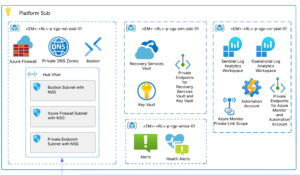In part 1 of this series, we looked at the growing shift from legacy platforms like Subversion (SVN) to GitHub. We discussed why companies are making the move, highlighted how GitHub’s features outshine older repositories, and shared AIS’s experience using custom tools and proven processes to facilitate seamless migrations.
In this blog, we dive deeper into what makes a GitHub migration successful—covering everything from initial assessments and the tooling required to handle large files, to cost considerations, training, and strategies for futureproofing.
What Goes into a Successful GitHub Migration?
Now that we’ve explored the ‘why’ behind GitHub migrations, let’s dive into the ‘how.’ Whether you’re planning your own migration or working with a partner, this guide will walk you through key steps, tools, and best practices to ensure success. Below are the main line items we have been using with our clients to complete successful migrations:
- Assessment – this is very important as this determines what we need to prepare for. From setup, tooling, custom scripts, Bastions Hosts, etc. AIS brings its arsenal of tools and knowledge to the migration. For instance, some companies will want all the SVN History. Others just want to start fresh. Again, it’s up to the client and something we can accommodate.
- Tooling – This is one of the areas AIS excels at. When doing a migration, any migration from SVN to GitHub, the source data (repository, file server, self-hosted SVN, etc.) is imperative to understand. Once AIS has digested the data source, we can then bring a custom migration design to the table. Some of the tooling we may use:
- Git-SVN migration tool.
- Custom PowerShell conversion and upload scripts. These are written in-house and for the soul purpose of the migration.
- TortoiseSVN – Only used if the migration requires it.
- AIS’s plethora of knowledge and troubleshooting experience.
- Large File Handling – this area is often overlooked when it comes to migrations. The client mentioned earlier in this article had several files over the GitHub limit. GitHub offers (and we do use) something called Git Large File Storage (LFS). Knowing not all files may be under the GitHub established limit, we will setup, configure, and utilize LFS. This helps being over ALL the data, not just parts that fit under the file limit.
- History Preservation – as mentioned earlier, we work with the client to determine if this is something they require. Some do. Some do not.
- Training – One of the areas AIS covers is training for/on GitHub. GitHub offers a plethora of Security, organization integration, and branching strategies. AIS has successfully trained dozens of customers on GitHub either through “Office Hours” or formal training classes.
- Planning and Strategy – Once the assessment has been completed, AIS sits with you (the client) and explains exactly how we believe the migration should be completed. We proved a detailed plan, signed off by the customer, and then proceed with the work keeping you apprised every step of the way.
- Testing and Guidance – Once the migration has been completed, a full test of the new GitHub repository is undertaken. Once AIS is satisfied with the code base and the Repository passes our testing metrics, we then invite you (the client) to do your in-house testing. We address any and all concerns you may have before turning it over to you, the client.
What the scope of a GitHub Migration?
When customers inquire about migrating from one repository to another one of the first things they ask is “What is the cost?” This depends on a few things.
- Amount of data to be migrated.
- Where is the data?
- What shape is the data in?
- What is the timeline to complete the migration?
The above, amongst other factors, dictate the investment they would have to make.
Typically, IT is seen as a cost center and a source control migration seems to be a necessary evil. We believe you can transform IT into a business drive and source control is at the heart of this. AIS views these migrations as investments with positive business outcomes such as growing revenue that makes the transition worth it.
For Example, one client we worked with invested in a full modernization of their government based app. They wanted a new landing zone, updated apps, server migrations, and a move to GitHub. They also had many SVN repositories that needed to be merged into one. This gave them modern development practices, better security, and a consistent branching strategy. They used CoPilot to speed up refactoring. New management saw this migration as a catalyst to adopt best practices and meet new standards. Now they are getting more features to their customers in a more secure way. In addition, developers are fully engaged and happy to contribute to business needs.
At AIS, we know there is a cost to migrating and enabling developers. We also know that the return can be transformative. Our team helps you manage that cost while gaining real business value. This includes better engineering practices, stronger security, and compliance. We keep you informed at every step and treat your code as if it was our own, whether it is the heart of your business or a simple test repository.
Future Proofing and Ongoing Success
AIS does more than move your data. We help you gain lasting value from your GitHub migrations. We have 45 years of experience helping companies modernize. Our approach addresses immediate needs and empowers you to fully use GitHub migrations. This includes advanced security, easy scaling, and smoother CI/CD integrations. With a central code repository and strong safeguards, you can increase innovation and simplify your development cycle. If you want to modernize your source control and improve engineering practices, contact AIS. We would love to help you move to GitHub.
Special Thanks to David Dracoules for his help with this blog post and solving the most difficult devops problems.






